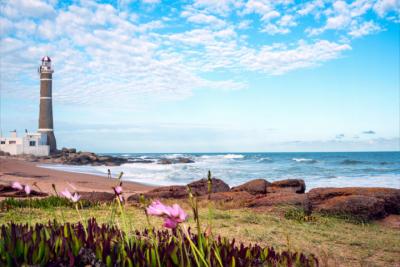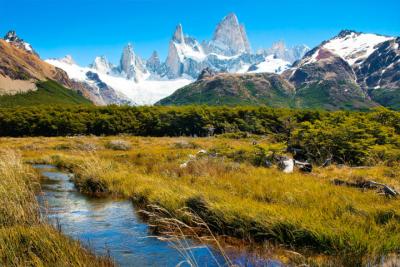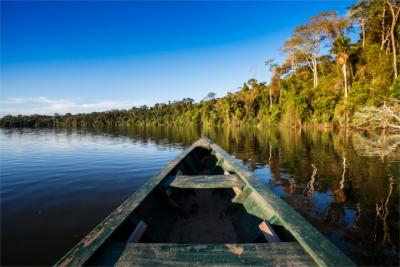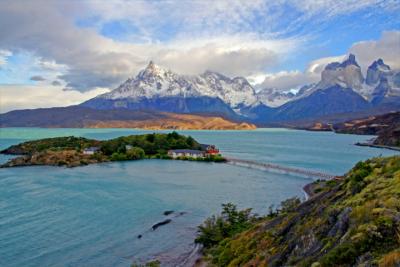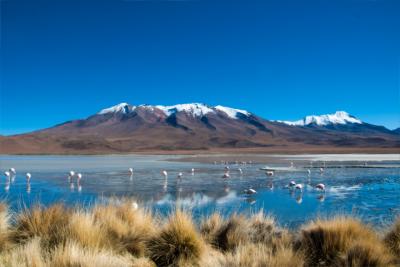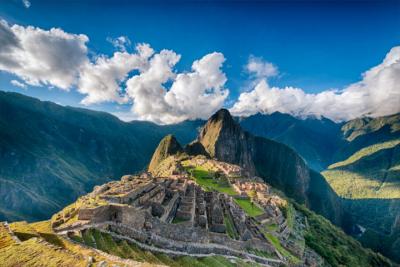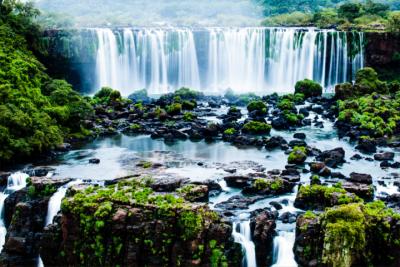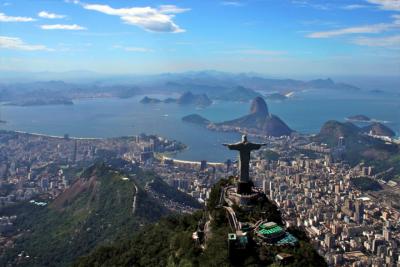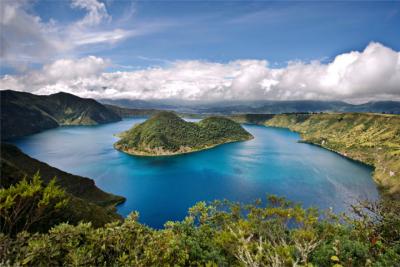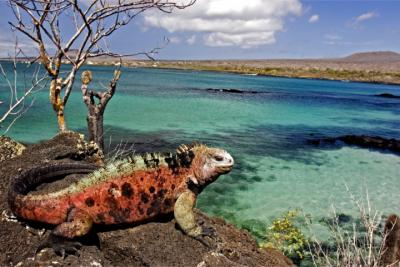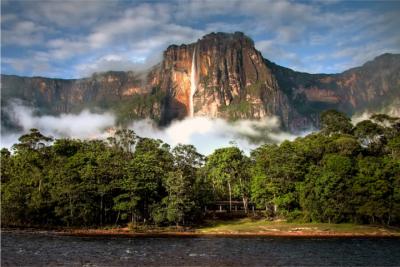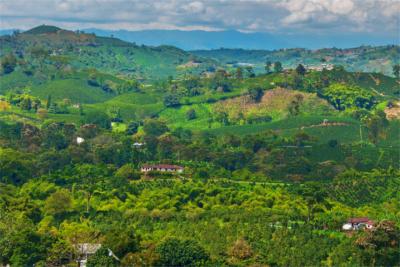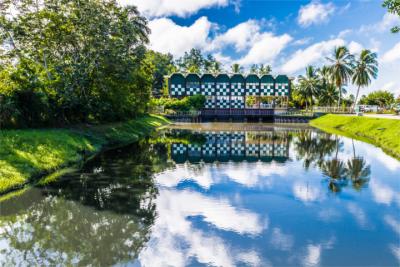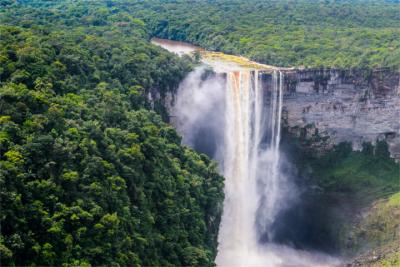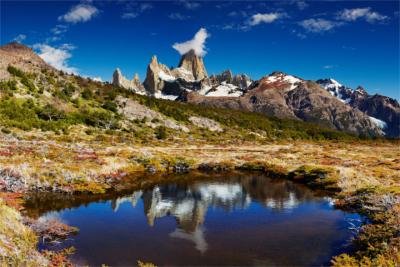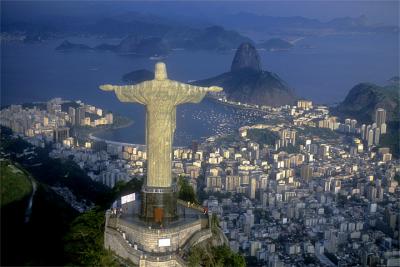Travel Offers
Travelmyne Featureprint
Distance
Rio de Janeiro - The Capital of the Carnival
Rio de Janeiro is a travel destination beyond comparison, which attracts countless tourists with its unique geographical position, the lively rhythm of the samba and the world-famous beach of the Copacabana. With good reason, many locals call Rio "Cidade Maravilhosa", the "wonderful city".

Geography - Brazil's second biggest city
Rio de Janeiro is Brazil's second biggest city after São Paulo with 11.9 million inhabitants and the capital of the state of Rio de Janeiro. The metropolis lies at the Atlantic Ocean, on Guanabara Bay and at the foothills of the Serra do Mar, a mountain range in the south-east of the country with a length of 1,500 kilometres. The geography of Brazil's former capital is characterised by lush vegetation, wonderful bays, the world-famous beaches in the districts of Ipanema and Copacabana and the impressive granite hills of the adjacent mountain range. Two of them are Sugarloaf Mountain (394 m) and the Corcovado (704 m) with the statue of Christ the Redeemer. Both are world-famous landmarks of the city. Rio de Janeiro's highest point is the Pico da Tíjuca with a height of 1,022 metres in the national park of the same name. Due to the geographical position, there is tropical climate with stuffy, hot summers and warm winters in the metropolis.

Culture - Two granite rocks and the statue of Christ the Redeemer
Rio de Janeiro was Brazil's capital as well as its economic and cultural centre for almost 200 years and the metropolis is an important hub of national economy to the present day. Nevertheless, there is a large gap between the poor and the rich, which is apparent from the many slums (favelas). Rio's inhabitants, most of which have European or African roots, are called "Cariocas", a name from a Tupi-Guarani language. It means as much as "house of the white man" and refers to the whitewashed houses of the Portuguese settlers. The city's landmarks are the granite rock of Sugarloaf Mountain (Pão de Açúcar) and the Corcovado, which is 704 metres high. The latter is a popular destination because of the statue of Christ the Redeemer, which is 30 metres high. It watches over the city with outstretched arms on a pedestal with a height of 8 metres and can be reached with the Corcovado Rack Railway. You reach the peak of Sugarloaf Mountain with the cable railway O Bondinho, whose cables have been part of acrobatic performances and Hollywood productions. The breathtaking mountain landscape around Rio with all its features has been part of the UNESCO World Cultural Heritage since 2012. Other sights in the city are the Praça Floriano, the Teatro Municipal, the stadium of Maracaná, the Metropolitan Cathedral of Saint Sebastian and the Candelária Church. In addition, many tourists visit the Museu Nacional do Brasil, the Museu Nacional de Belas Artes, the Escadaria Selarón and the Botanical Garden.

Experience - Carnival, samba shows and Brazilian cuisine
Rio de Janeiro is most of all known for its carnival. The colourful spectacle is one of the world's greatest street festivals. The magnificent and shiny parade of the samba schools (Escolas de Samba) with artistic costumes, loud music and festive floats takea place in the parade area of the Sambadrome. It was built for the carnival parade in 1984 and can hold almost 9,000 spectators. In addition to the competition of the samba schools, samba events take place in many hotels, discos and clubs during the carnival. Travellers do not have to go without Brazil's national dance at other times either. Several samba shows take place in various locations throughout the year and you can visit a samba school to experience the atmosphere of the passionate dance. As in other parts of the country, Rio de Janeiro's cuisine is strongly influenced by European and African immigrants. This means that you do not only get international food but also local dishes such as the national dish feijoada, a rice and bean stew with meat. The so-called churrascarias, grill restaurants from Southern Brazil, are particularly popular. They do not only offer grilled meat (churrasco) but also organise traditional rodízio, a kind of all-you-can-eat buffet for grilled food.

Activities - Surfing near Ipanema and hiking on the Corcovado
A visit to the beaches in Ipanema and Copacabana is a must on a trip to Rio de Janeiro. The latter is without doubt one of the world's best-known beaches. Besides bathing, you can do a number of water sports here. Surfing, diving, snorkelling and rowing are only a few examples. Ipanema Beach is a paradise for surfers because due to the floodlight, you can even go surfing at night. If you want to avoid the vibrant activity at these beaches, you can relax at the more remote beaches in the vicinity. Hikers get their money's worth on the city's hills and in the Parque Nacional da Tijuca. The granite rocks are not only an excellent climbing location but they are also equipped with several hiking trails, which invite holidaymakers to long hikes with breathtaking views.

Information
The best time for a holiday in Rio de Janeiro is the winter (May to October). During these months, it is between 25 and 28 °C and there is little rain. Travellers best arrive at the Aeroporto Internacional do Rio de Janeiro/Galeão-Antonio Carlos Jobim (GIG), which is about 20 kilometres away from the city centre. You should adhere to certain rules on a tour through the metropolis. Slums and less busy streets should be avoided because they are often the scene of muggings. Holidaymakers should be careful at the beaches too. If you become the victim of a mugging, you should not argue and give the thieves your belongings. That is why it is better to only carry a certain amount of money with you and store important documents in the hotel safe. Unobtrusive clothing and a less expensive camera make it less likely for you to be mugged.
A holiday in Rio de Janeiro is the ideal opportunity to combine an exotic city trip with beach and hiking holidays. While the surrounding mountains invite travellers to impressive hikes, Copacabana Beach is perfect for going bathing and doing water sports. Culture is offered by the city's colonial buildings, the world-famous statue of Christ the Redeemer or the lively and cheerful samba shows.

